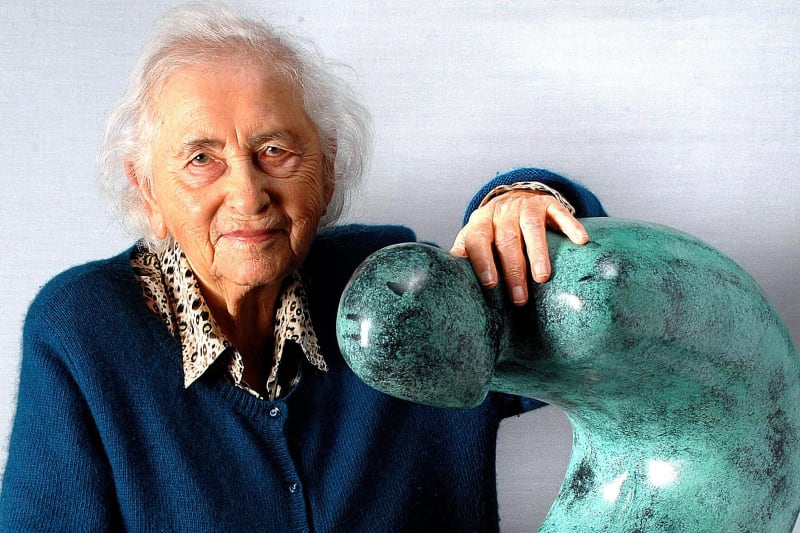Sculptor Naomi Blake (née Zisel Düm) was born into a Jewish family in Mukačevo, Czechoslovakia (now Mukacheve, Ukraine) on 11 March 1924, the youngest of ten children. She survived Auschwitz, although 24 out of the 32 members of her family perished, afterwards escaping during a death march from Brannau, and eventually making it to Palestine. In 1948, while she was recuperating, she was given a piece of olivewood to sculpt to pass the time initiating her lifelong passion for sculpture. After the war, she lived in Milan and in Rome, before settling in North London. She studied at the Hornsey School of Art in London (1955–60) and began exhibiting in 1962. She participated in the Annual Summer Exhibition at Ben Uri Gallery in 1964 and in the Annual Open Exhibition in 1966 and her work was included in exhibitions including Characters from the Bible (1988) and Czech Artists from the Collection (1998). She also served on the Council of Ben Uri's Art Committee between 1975 and 1993 and was a member of the Royal British Society of Sculptors. In 2014 she held an exhibition at the Curwen Gallery, Windmill Street W1 and her daughter, Anita Peleg, published two books devoted to her mother's life and work, ‘Naomi Blake: Dedication in Sculpture’, a comprehensive catalogue of her sculptures, and ‘Glimmer of Hope: The Story of Naomi Blake’.
Naomi Blake died in London, England on 7 November 2018. Many of her sculptures are publicly sited at locations including Fitzroy Square and St Ethelberga's Church in London, the University of Leicester Scarman Centre and The Holocaust Centre, Nottinghamshire, and her work is also in the collection of Amnesty International and in a number of private collections including that of the Queen and the Prince of Wales. In 2021 the Royal British Society of Sculptors mounted an exhibition of her work on the sculpture terrace as part of the Society’s ‘Pioneering Women’ project.


